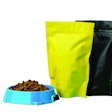The fourth annual National Pet Obesity Awareness Day Study from the Association for Pet Obesity Prevention shows more than 50% of US dogs and cats are now overweight or obese. Specifically, the survey highlights these preliminary data:
- 55.6% of US dogs—43 million—are overweight or obese;
- 20% of US dogs—16 million—fall into the obese category;
- 54% of US cats—50 million—are overweight or obese; and
- 22% of US cats—20 million—are obese.
The study, conducted in late 2010 and released in February of this year, was done in partnership with Banfield, the line of pet hospitals owned by Mars. According to APOP, this partnership is proof that obesity is an important topic among veterinarians.
“As a surgeon, many of the joint problems I treat are related to excess weight,” Steven Budsberg, DVM, director of clinical research at the University of Georgia College of Veterinary Medicine and past-president of the American College of Veterinary Surgeons, is quoted saying on APOP’s website. “If pet owners could keep their pet at a normal weight, many of these surgeries could be avoided.”
An article by Gwendolyn Bounds in the Wall Street Journal carries the pet owner angle further, saying the survey indicates owners deserve the main share of blame because they regularly overfeed their pets, don’t give them enough exercise and are not educated about the serious health consequences of pet obesity.
The article goes on to highlight products designed to help combat the problem, including, of course, petfoods formulated to help reduce weight. But the focus is on owner awareness and education. As Bounds quotes Dr. Budsberg in the article: “I never met a German Shepherd who could open the refrigerator or food bag and pour himself another bowl.”
Which makes it all the more essential, I believe, for petfood packaging and labels to include calorie content information and—perhaps even more importantly—feeding guidelines that are clear and easy for the average pet owner to understand and follow. That means directions in terms of common measurements such as cups or portions of cans. Let's face it, most people can’t interpret and apply things like kilocalories per grams.
In January, the Association of American Feed Control Officials moved one step closer to mandating that such information be included on all dog and cat food and treat labels, via an amendment to the AAFCO Model Regulations. The amendment still has several hurdles to clear in the AAFCO approval process; if it passes them all, the earliest it could be approved would be 2012. Then a grace period to allow manufacturers to comply would likely mean another year or two before the information was available to pet owners.
Yet to me, it’s good to know at least the movement is still under way. I understand some people and companies in the industry believe there are very valid reasons to not support this amendment. But can you really argue against those numbers from the APOP study?
Granted, providing the information is no guarantee that pet owners will follow it. You could argue that human food labels have been required to include information on calories, fat and all sorts of other substances for a while now, and the overweight/obesity rate in humans (at least in the US) keeps climbing, too.
But unless and until such data is available for petfoods, veterinarians, other experts and conscientious pet parents trying to combat pet obesity are fighting without what could prove to be the most valuable weapon of all: information.















